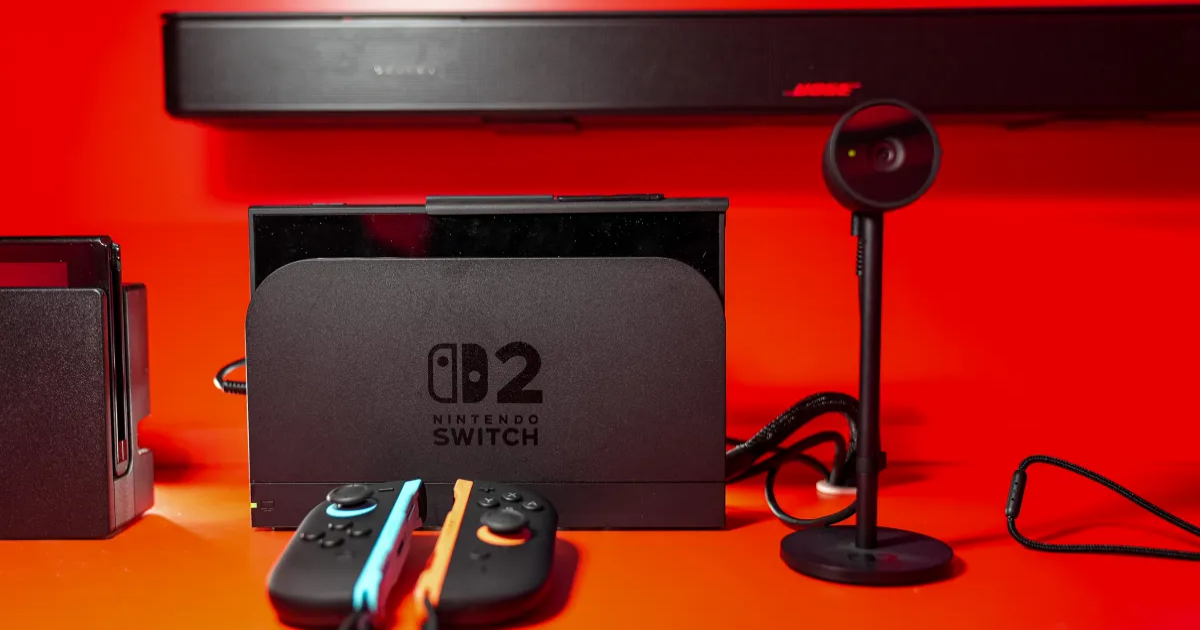In addition to a new console and lineup of games, Nintendo also revealed some sticker shock at its Switch 2 event last week. The console will cost $449.99 — a big jump from the original Switch, which debuted at $299.99 in 2017. Some have speculated that the price hike was at least partly due to the ongoing confusion around President Donald Trump’s planned tariffs. The timing was certainly awkward; Trump announced a fresh, wide-ranging wave of global tariffs the same day as Nintendo’s event.
But Nintendo of America president Doug Bowser says that tariffs did not directly impact the console’s original price tag. “Put [the April 2nd announcement] aside. Any previous tariffs were not factored into the price itself,“ he explained, speaking to me the day after the event.
That may be true, but the impact of the April 2nd tariff announcement is already being felt. Just two days after its event, Nintendo announced that it was delaying Switch 2 preorders, which were originally slated to begin on April 9th, in order to “assess the potential impact of tariffs and evolving market conditions.” There’s currently no new preorder date, and whether the price of the console will be changed is unclear. “The news is fresh, and like many companies right now, we are actively assessing what the impact may be,” Bowser says.
So why is the Switch 2 so expensive? When I asked Bowser, he rattled off a list of the new console’s features: the bigger LCD screen, the more powerful internals, the Joy-Con controllers that have been “enlarged and redesigned for durability,” the GameChat social layer built into the console, and more. “We want to make sure that this is a device that is approachable, that consumers will see as part of their overall entertainment experiences and will understand that it has longevity to it,” Bowser says. “And all of those factors really go into the consideration of the price.”
The Switch 2’s price tag also puts it in the premium spot in Nintendo’s lineup. Even with the announcement of the new console, Nintendo will still be selling all three models of the original Switch — the base unit, the OLED version, and the Switch Lite — for the foreseeable future. But Bowser gave an unclear response when asked if the existing Switch devices, which top out at $349.99, had an impact on the decision to charge $449.99 for the Switch 2. “You want to consider pricing relative to the Switch since we still have that in distribution,” he says. “But, really, the consideration was driven more by what is a part of this particular gaming experience versus what it is relative to the Switch 1.”
“We are actively assessing what the impact may be.”
The console isn’t the only part of the Switch lineup that’s gotten more expensive. Select Switch 2 games have also received a price bump. For example, Mario Kart World will cost $79.99 when it comes out on June 5th, compared to the standard $59.99 for first-party games on the original Switch. Speaking generally about determining pricing for games, Bowser says that “each game, we believe, is a unique experience,” and thus prices can vary accordingly.
That’s how Nintendo Switch 2 Welcome Tour — a game that teaches players details about the Switch 2 and offers tech demos highlighting its key features — ended up as a paid game instead of a free pack-in title like Wii Sports or Astro’s Playroom. “As this game was being developed, what’s been packed into it is a depth of minigame experiences,” Bowser says. “They’re very deep, they’re very repeatable. And so, as we looked at that depth of play experience and opportunity, we felt that $9.99 was a fair price to ask for that.”
See More:
